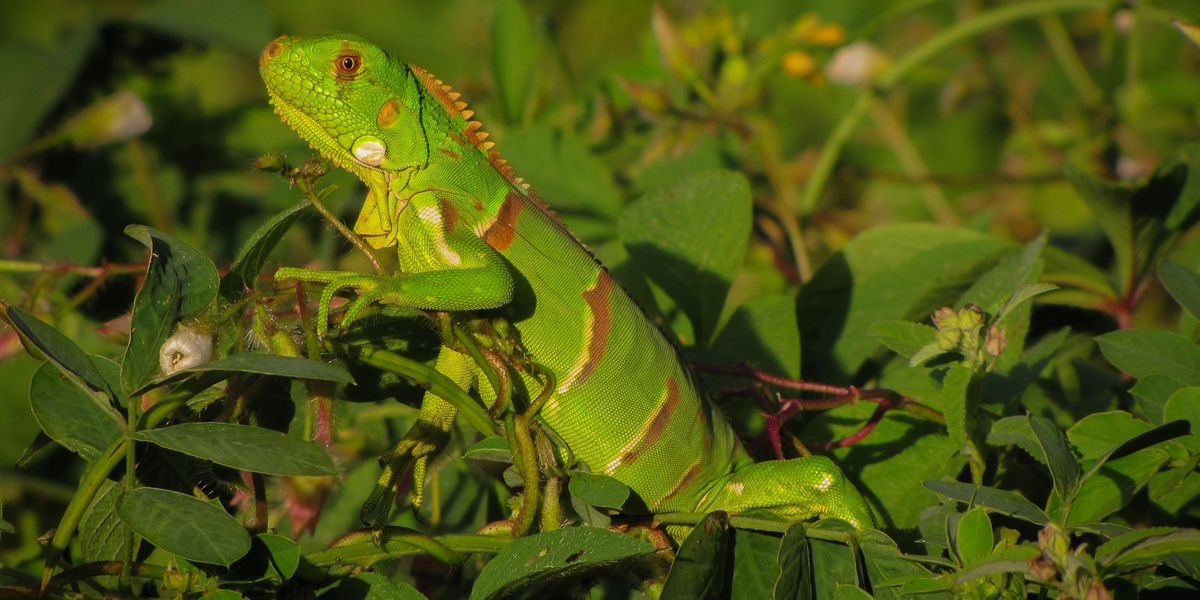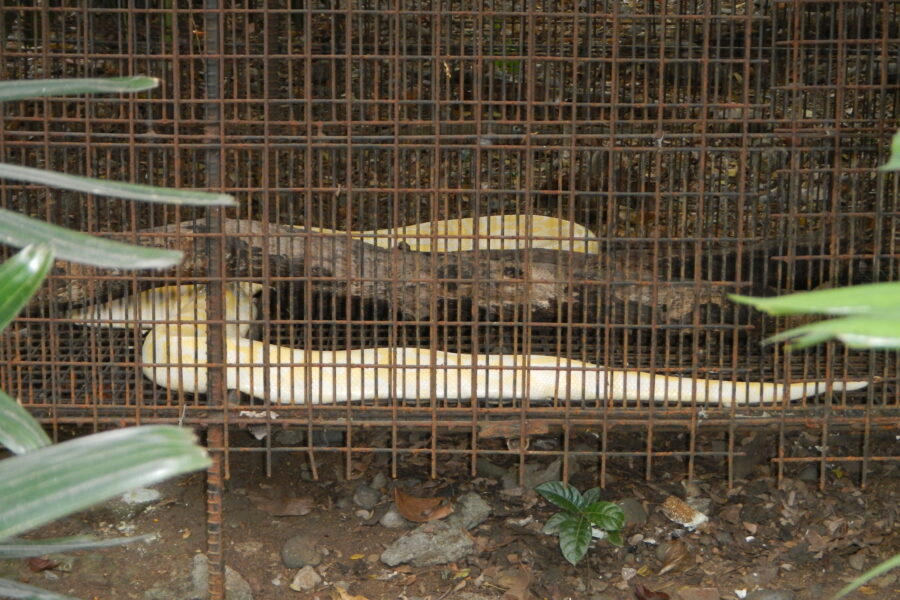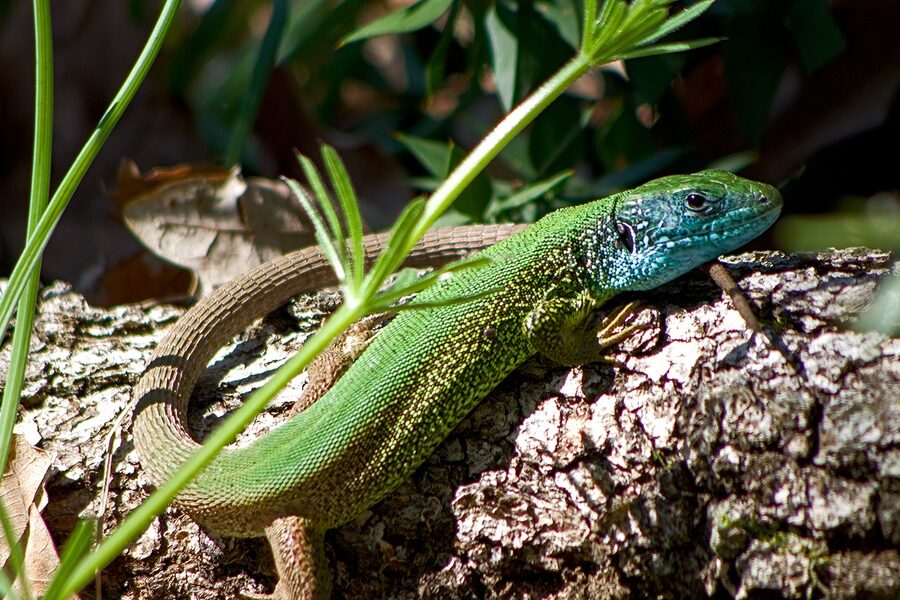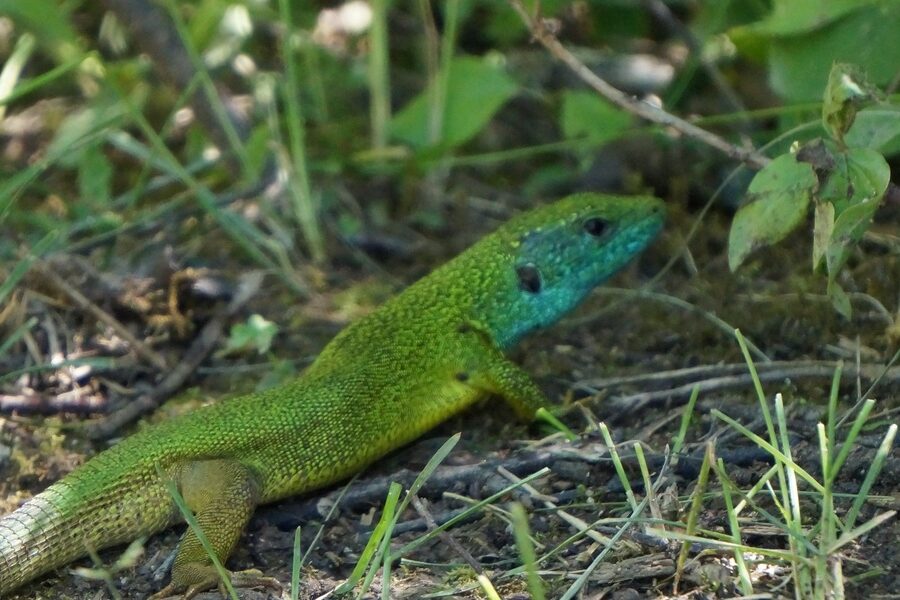Central America’s mosaic of rainforests, dry forests, mangroves and coral-shelf coasts supports a rich variety of reptiles, from rivers and swamps to offshore waters. Sightings depend on habitat and season, so local guides and protected areas are often the best places to encounter them.
There are 33 Reptiles of Central America, ranging from American crocodile to Yellow-bellied sea snake. For each entry you’ll find below columns: Scientific name,Typical length (cm),Range (countries) to help compare identification, size and national distribution at a glance — you’ll find the detailed list below.
Where are these reptiles most likely to be seen in the region?
Look for habitat-specific hotspots: crocodiles and turtles around estuaries and mangroves, sea snakes offshore, and many lizards and terrestrial snakes in forests, savannas and rocky areas. National parks, reserves and guided field trips increase your chances, and seasonality (wet vs dry) affects activity.
Which species should I avoid or report to local authorities?
Avoid handling wild reptiles; large crocodilians and some venomous snakes (including certain sea snakes) pose real risks. If you find injured, stranded or out-of-place animals, contact local wildlife or park authorities rather than attempting rescue yourself — consult the list below for species-level notes and ranges.
Reptiles of Central America
| Common name | Scientific name | Typical length (cm) | Range (countries) |
|---|---|---|---|
| American crocodile | Crocodylus acutus | 350 | Belize, Guatemala, Honduras, Nicaragua, Costa Rica, Panama |
| Morelet’s crocodile | Crocodylus moreletii | 250 | Belize, Guatemala |
| Green sea turtle | Chelonia mydas | 100 | Belize, Guatemala, Honduras, Nicaragua, Costa Rica, Panama |
| Hawksbill turtle | Eretmochelys imbricata | 90 | Belize, Guatemala, Honduras, Nicaragua, Costa Rica, Panama |
| Leatherback turtle | Dermochelys coriacea | 180 | Belize, Guatemala, Honduras, Nicaragua, Costa Rica, Panama |
| Olive ridley turtle | Lepidochelys olivacea | 70 | Nicaragua, Costa Rica, Panama, El Salvador |
| Loggerhead turtle | Caretta caretta | 90 | Costa Rica, Panama, Nicaragua |
| Central American river turtle | Dermatemys mawii | 70 | Belize, Guatemala, Honduras |
| Central American slider | Trachemys venusta | 35 | Belize, Guatemala, Honduras, Nicaragua, Costa Rica, Panama |
| Green iguana | Iguana iguana | 150 | Belize, Guatemala, Honduras, Nicaragua, Costa Rica, Panama |
| Black spiny-tailed iguana | Ctenosaura similis | 100 | Guatemala, Belize, Honduras, Nicaragua, Costa Rica, Panama |
| Roatán spiny-tailed iguana | Ctenosaura bakeri | 60 | Honduras |
| Common basilisk | Basiliscus basiliscus | 70 | Belize, Guatemala, Honduras, Nicaragua, Costa Rica, Panama |
| Giant anole | Anolis biporcatus | 30 | Costa Rica, Panama, Nicaragua, Honduras |
| Slender anole | Anolis limifrons | 20 | Belize, Guatemala, Honduras, Nicaragua, Costa Rica, Panama |
| Common house gecko | Hemidactylus frenatus | 12 | Belize, Guatemala, Honduras, Nicaragua, Costa Rica, Panama |
| White-throated gecko | Gonatodes albogularis | 8 | Belize, Guatemala, Honduras, Nicaragua, Costa Rica, Panama |
| Spectacled caiman | Caiman crocodilus | 200 | Nicaragua, Costa Rica, Panama |
| Terciopelo (Fer-de-lance) | Bothrops asper | 150 | Belize, Guatemala, Honduras, Nicaragua, Costa Rica, Panama |
| Bushmaster | Lachesis stenophrys | 230 | Honduras, Nicaragua, Costa Rica, Panama |
| Eyelash viper | Bothriechis schlegelii | 60 | Guatemala, Honduras, Nicaragua, Costa Rica, Panama |
| Side-striped palm-pitviper | Bothriechis lateralis | 60 | Costa Rica, Panama |
| Hognosed pitviper | Porthidium nasutum | 75 | Belize, Guatemala, Honduras, Nicaragua, Costa Rica, Panama |
| Central American rattlesnake | Crotalus simus | 120 | Guatemala, Belize, Honduras, Nicaragua, Costa Rica, Panama |
| Central American coral snake | Micrurus nigrocinctus | 80 | Guatemala, Belize, Honduras, Nicaragua, Costa Rica, Panama |
| Brown vine snake | Oxybelis aeneus | 150 | Belize, Guatemala, Honduras, Nicaragua, Costa Rica, Panama |
| Boa constrictor | Boa constrictor | 250 | Belize, Guatemala, Honduras, Nicaragua, Costa Rica, Panama |
| Annulated tree boa | Corallus annulatus | 150 | Costa Rica, Panama, Nicaragua |
| Cat-eyed snake | Leptodeira annulata | 100 | Belize, Guatemala, Honduras, Nicaragua, Costa Rica, Panama |
| Painted wood turtle | Rhinoclemmys pulcherrima | 25 | Belize, Guatemala, Honduras, Nicaragua, Costa Rica, Panama |
| Scorpion mud turtle | Kinosternon scorpioides | 20 | Belize, Guatemala, Honduras, Nicaragua, Costa Rica, Panama |
| Yellow-bellied sea snake | Pelamis platura | 100 | Costa Rica, Panama, Nicaragua |
| Snail-eating snake | Sibon nebulatus | 100 | Belize, Guatemala, Honduras, Nicaragua, Costa Rica, Panama |
Images and Descriptions
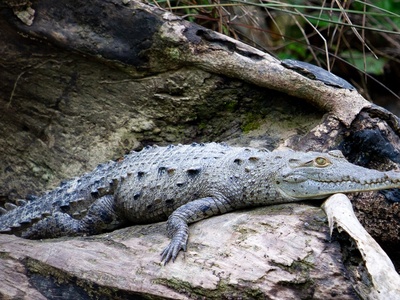
American crocodile
Large estuarine crocodile found in coastal mangroves, rivers and lagoons. Adults reach about 3.5 m; vulnerable in parts of its range. Powerful bite makes it dangerous — avoid waterways and nesting beaches where it’s common.
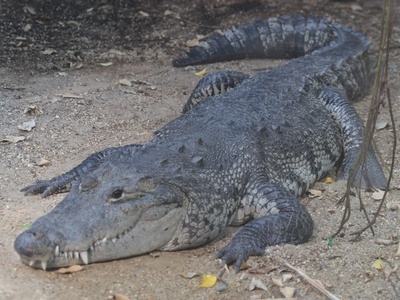
Morelet’s crocodile
Medium freshwater crocodile of rivers, lagoons and swamps in lowland Belize and Guatemala. Adults usually near 2.5 m; locally common but threatened by habitat loss and hunting. Can bite if provoked — generally less aggressive than American crocodile.
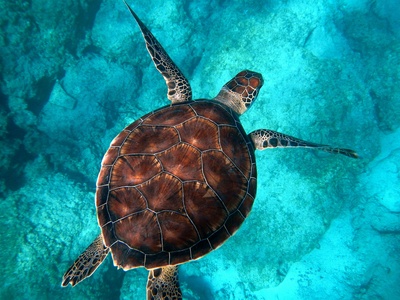
Green sea turtle
Large marine turtle that grazes on seagrass and algae; common nesting on Central American beaches. Adults reach about 1 m carapace; endangered from fisheries and egg collection. Harmless to humans but protected — do not disturb nesting females.
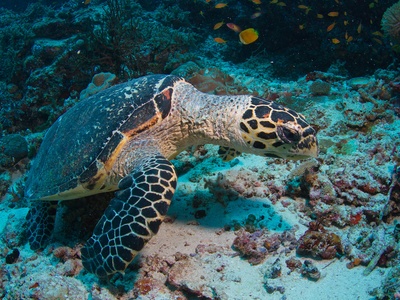
Hawksbill turtle
Colorful marine turtle with a pointed beak and patterned shell; nests on Caribbean and Pacific beaches. Adults about 90 cm and critically endangered from shell trade and bycatch. Not dangerous but highly protected — do not touch or collect.
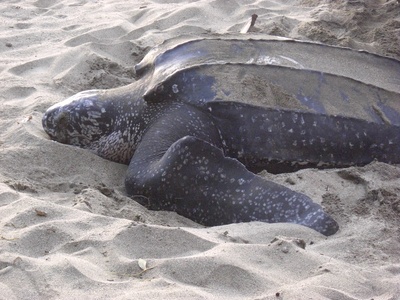
Leatherback turtle
Enormous ocean-going turtle with a leathery shell that migrates through Central American waters and nests on Pacific beaches. Adults commonly near 180 cm; critically endangered from bycatch and egg loss. Impressive size but harmless to people.
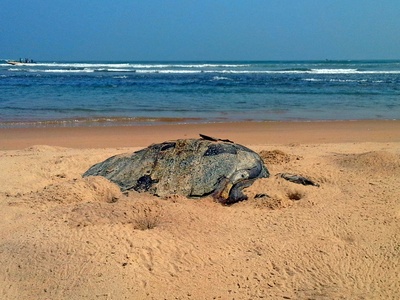
Olive ridley turtle
Small, fast-swimming sea turtle that nests in mass arribadas on Pacific coasts. Adults about 70 cm; vulnerable from fishing and egg harvest. Harmless to swimmers but important to protect during nesting seasons.
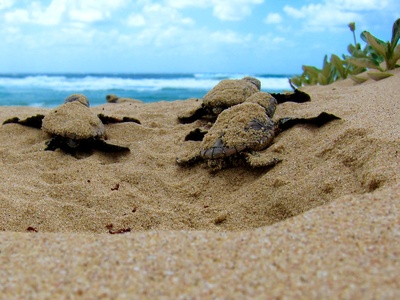
Loggerhead turtle
Robust sea turtle with a large head, occasional in Central American waters and nesting sites. Adults about 90 cm; vulnerable from fisheries and habitat loss. Not aggressive but powerful-biting — avoid handling and support conservation.
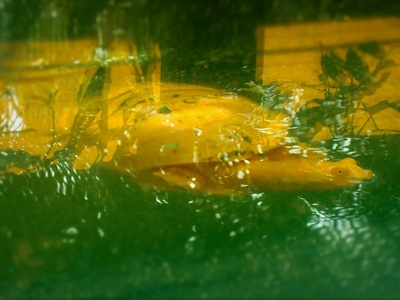
Central American river turtle
Rare river turtle of Mesoamerican lowlands found in slow-moving rivers and wetlands. Adults reach about 70 cm and are critically endangered from hunting and habitat loss. Shy freshwater species with legal protections but small populations.
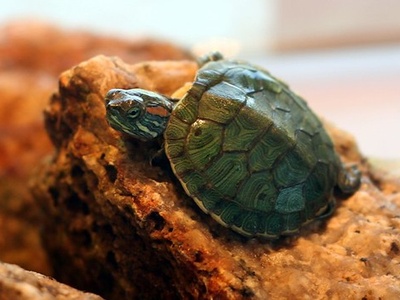
Central American slider
Freshwater pond turtle common in rivers, swamps and canals across Central America. Adults about 35 cm, adaptable but locally threatened by habitat change and collection. Non-aggressive; basks on logs and is often seen near people.
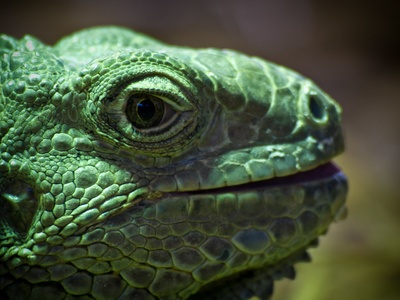
Green iguana
Large herbivorous lizard common in lowland forests, mangroves and urban areas. Adults up to about 150 cm including tail; vulnerable locally from hunting and pet trade. Mostly harmless but can bite or whip tail — admire from a distance.
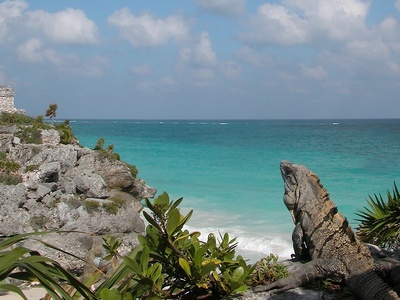
Black spiny-tailed iguana
Fast, spiny-tailed iguana frequenting dry forests, rocky outcrops and human areas. Adults often reach 100 cm and are common in Pacific Central America. Generally not dangerous, can bite or tail-whip; faces habitat pressures locally.
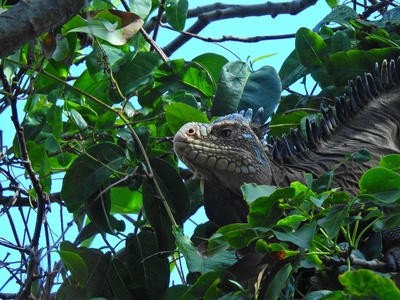
Roatán spiny-tailed iguana
Island endemic to Roatán, Honduras, adapted to dry forest and rocky habitats. Adults about 60 cm and considered endangered from hunting and habitat loss. Harmless to people but conservation action targets this restricted-range species.
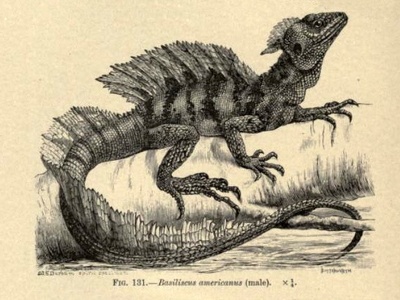
Common basilisk
Also called the “Jesus lizard” for its ability to run on water; inhabits riverside forests and clearings. Adults around 70 cm with a tall crest and long tail. Common and not dangerous; often seen near streams.
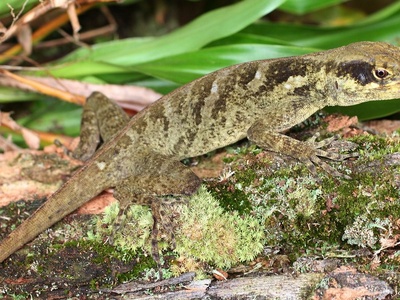
Giant anole
Large anole of lowland to montane forests, often green or brown and sizable for anoles. Adults total length near 30 cm; common in parts of Central America. Harmless insectivore and an eye-catching lizard for observers.
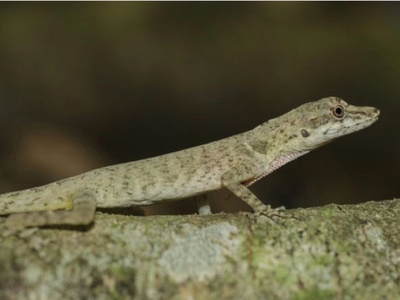
Slender anole
Small, slender anole found in lowland rainforest and disturbed areas. Adults about 20 cm including tail, with subtle green or brown coloring. Widespread and harmless; active on trunks and shrubs where insect prey abounds.
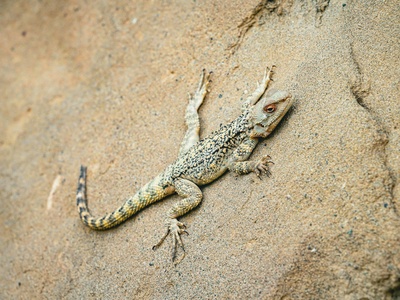
Common house gecko
Non-native common house gecko now established across Central America. Adults about 12 cm, nocturnal and often found on buildings hunting insects. Harmless to people and useful for pest control, but considered invasive in some areas.
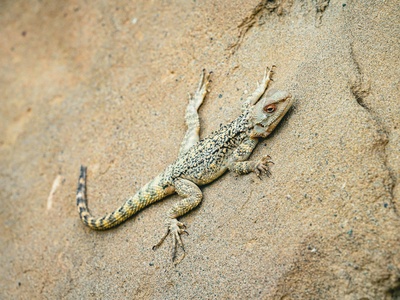
White-throated gecko
Tiny daytime gecko with striking male coloration; inhabits forest edges, gardens and plantations. Adults reach around 8 cm and are widespread. Harmless and secretive, often seen on tree trunks or shaded walls.
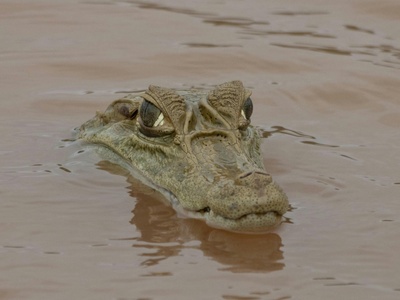
Spectacled caiman
Small to medium caiman common in slow freshwater habitats of southern Central America. Adults about 200 cm, adaptable and sometimes abundant; listed as least concern though locally hunted. Can bite and should be avoided, especially near nests.
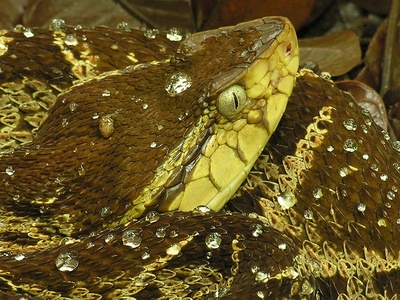
Terciopelo (Fer-de-lance)
Highly venomous pit viper common in lowland forests, plantations and human-altered habitats. Adults often around 150 cm and responsible for many snakebites. Aggressive when threatened; medical attention required for envenomations.
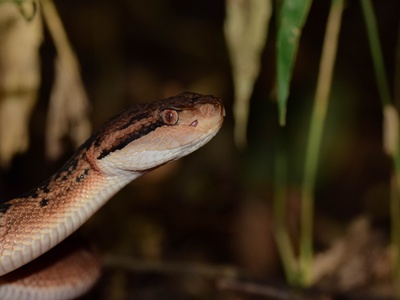
Bushmaster
Also called the bushmaster, a very large venomous pit viper of remote rainforests. Adults can exceed 2 m and are rare. Extremely dangerous if encountered; threatened by habitat loss and forest fragmentation.
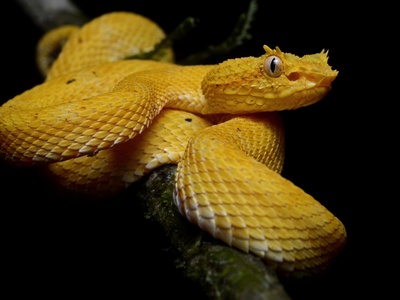
Eyelash viper
Eyelash viper with cryptic color patterns and arboreal habits in humid forests. Adults near 60 cm, often ambushing prey among vines and bromeliads. Highly venomous but small and sedentary; sightings are striking yet warrant caution.
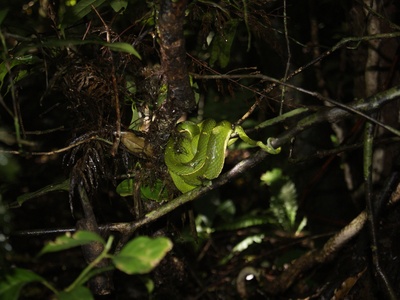
Side-striped palm-pitviper
Palm-pitviper living in cloud forests and high-elevation wet forest. Adults about 60 cm, bright green with a lateral stripe. Venomous and secretive; typically encountered at altitude in Costa Rica and western Panama.
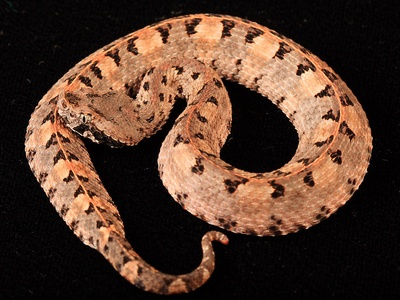
Hognosed pitviper
Hognosed pitviper of lowland forests and secondary growth, often found near leaf litter. Adults around 75 cm, a small to medium venomous species. Risk exists but bites are usually less severe than large Bothrops.
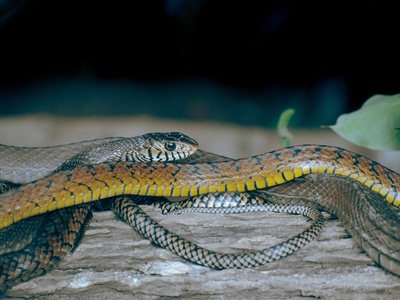
Central American rattlesnake
Middle American rattlesnake inhabiting dry and moist habitats; adults commonly near 120 cm and use a rattle as warning. Venomous and potentially dangerous; avoid and seek antivenom if bitten. Widely distributed.
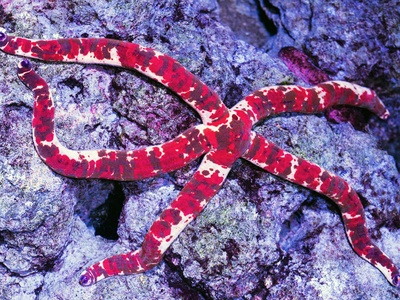
Central American coral snake
Distinctively banded coral snake found in forests and edges; adults around 80 cm. Highly venomous neurotoxin specialist but usually reclusive and infrequently encountered. Bright coloration warns predators; extreme caution advised.
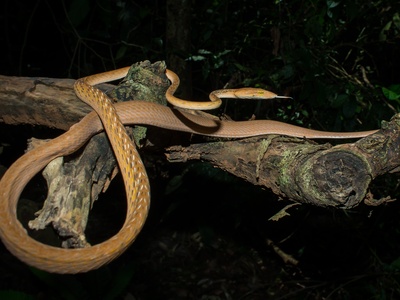
Brown vine snake
Slender, arboreal vine snake with pointed head and superb camouflage in trees. Adults often 150 cm long but thin; mildly venomous to prey though not generally dangerous to humans. Common in forest and gardens.
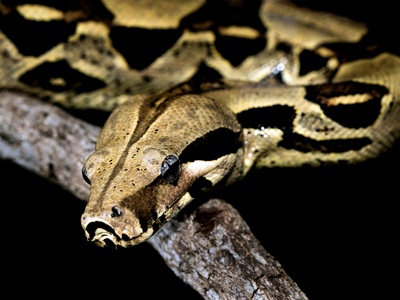
Boa constrictor
Large nonvenomous constrictor of forest and open areas, adults commonly reaching 2–3 m. Powerful ambush predator feeding on mammals and birds; can bite and constrict if threatened. Found throughout Central America.
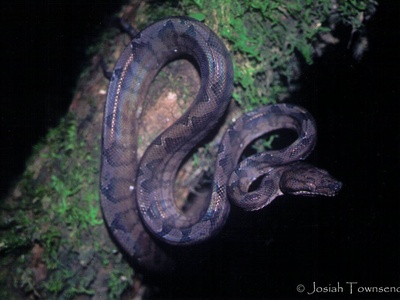
Annulated tree boa
Arboreal nocturnal constrictor with annulated pattern for camouflage. Adults near 150 cm and frequent humid forests and mangroves. Nonvenomous but strong; often hidden in trees and low vegetation.
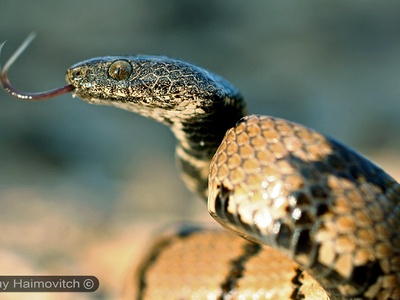
Cat-eyed snake
Common cat-eyed snake active at night in forests and gardens; adults about 100 cm and prey on frogs and lizards. Mildly venomous to small prey but generally not dangerous to humans; often near lights where frogs visit.
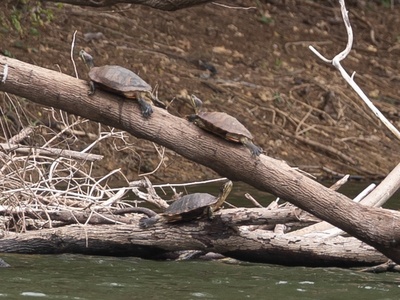
Painted wood turtle
Attractive painted wood turtle inhabiting forested streams and wet lowlands. Adults about 25 cm carapace, omnivorous and often secretive. Some populations face threats from habitat loss and collection; harmless to people.
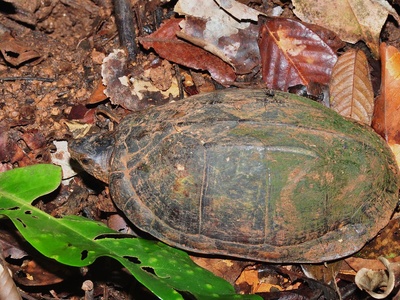
Scorpion mud turtle
Often called the scorpion mud turtle, a small semi-aquatic species in ponds and slow rivers. Adults around 20 cm; omnivorous and tolerant of disturbed habitats. Not dangerous and sometimes kept locally, though populations face pressures.
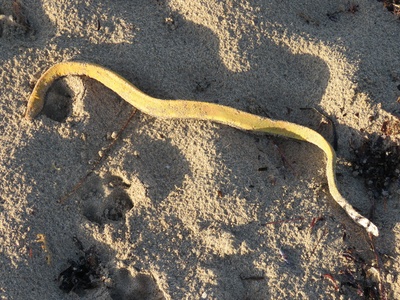
Yellow-bellied sea snake
Pelagic sea snake found in warm Pacific waters off Central America; adults near 100 cm and highly venomous. Rarely encountered by beachgoers but sometimes caught by fisheries. Not typically a threat to swimmers but handle with extreme caution.
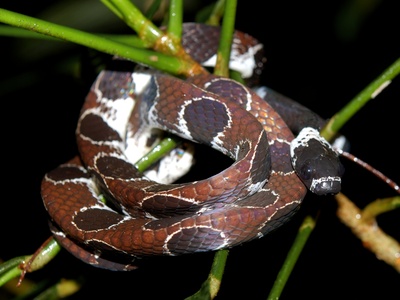
Snail-eating snake
Slender nocturnal snake specializing on snails and slugs; found in humid forests and gardens. Adults around 100 cm and harmless to people, relying on stealth and specialized jaws. Widespread and interesting to naturalists for its feeding habits.
